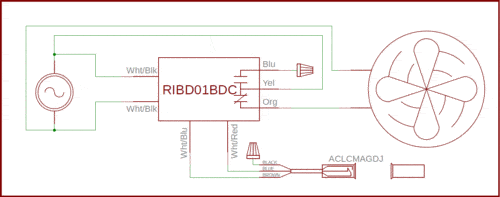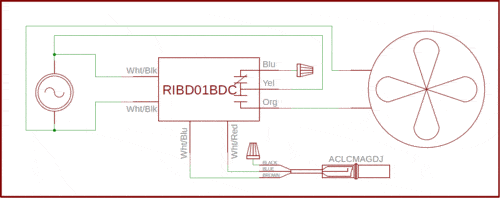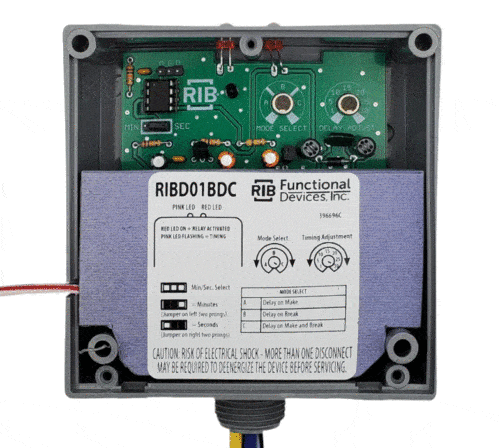Controlling an Air Curtain
Have you ever walked through an automatic sliding door and got blasted by air as you crossed the threshold? If so, you have walked through an air curtain. An air curtain is a large fan mounted above an opening. It blows a stream of air down to separate two environmental spaces while still allowing for passage and sight through the opening. Air curtains are typically used in commercial settings and can provide several benefits:
- Keeping unconditioned outdoor air from entering a conditioned space
- Keeping dust and debris from entering a space
- Preventing fumes from traversing the opening
- Preventing insects from flying into a building
Another important benefit of an air curtain is energy savings. They help keep hot, humid air out during summer months and keep warm air in during winter months, which will save on heating and cooling costs. This blog will show and explain how to use Functional Devices, Inc. products to control an air curtain.
Simply turning an air curtain on when a door opens and off when it closes seems straight-forward, but there is a little more to this solution. Using our products, a time delay can be added, which prevents the air curtain from turning on and off rapidly (short cycling) if the door is opening and closing repeatedly. This can be done with our time delay dry contact relay, RIBD01BDC, and one of our magnetic switches like ACLCMAGDJ. The first diagram shows the “door” Open and fan ON.

With the door open, the ACLCMAGDJ’s magnet is away from the switch body, so the internal reed switch will be in its “normal” state, which means the Normally Closed (N/C) contact between the Blue and Brown wires will close. The closed contact connects the Dry Contact Input wires (Wht/Blu and Wht/Red) of the RIBD01BDC. When this happens, the Normally Open (N/O) contact of the RIBD01BDC closes, and the air curtain, represented by the fan, turns on. The next diagram shows the door closed.

When the door closes, the ACLCMAGDJ will have its magnet acting on the internal reed switch, this will open the switch, which opens the Dry Contact Input of the delay relay, RIBD01BDC. After that happens, the timer in the delay relay begins to count down. When the set time expires, the RIBD01BDC’s N/O contact opens again, and the air curtain will turn off.
Setting the Time Delay
The timer period in the delay relay can be set inside the device itself. In the image below, the adjustment dials and header can be seen. The time can range from 0-30 seconds or 0-30 minutes. The red LED on the device will illuminate when the N/O contact closes. The pink LED will blink while the time delay is occurring. The user can adjust the time to accommodate the average pedestrian rate, so the

The diagrams show the delay relay and fan powered by the same source, but this does not have to be the case; they can be independent sources. Also, the RIBD01BDC requires 120 Vac power, but we also offer the RIBD02BDC, which can be power by 208-277 Vac. The magnetic switch shown in the diagram is a door jamb switch. This is to be mounted inside the door and the jamb. We also offer the ACLCMAGSM, which is intended to be surface mounted on the door and jamb.
Make sure to check the product datasheets for the relay contact ratings to ensure it will work with the load to be controlled. For answers to your product questions, send an email to support@functionaldevices.com or contact us by phone.
